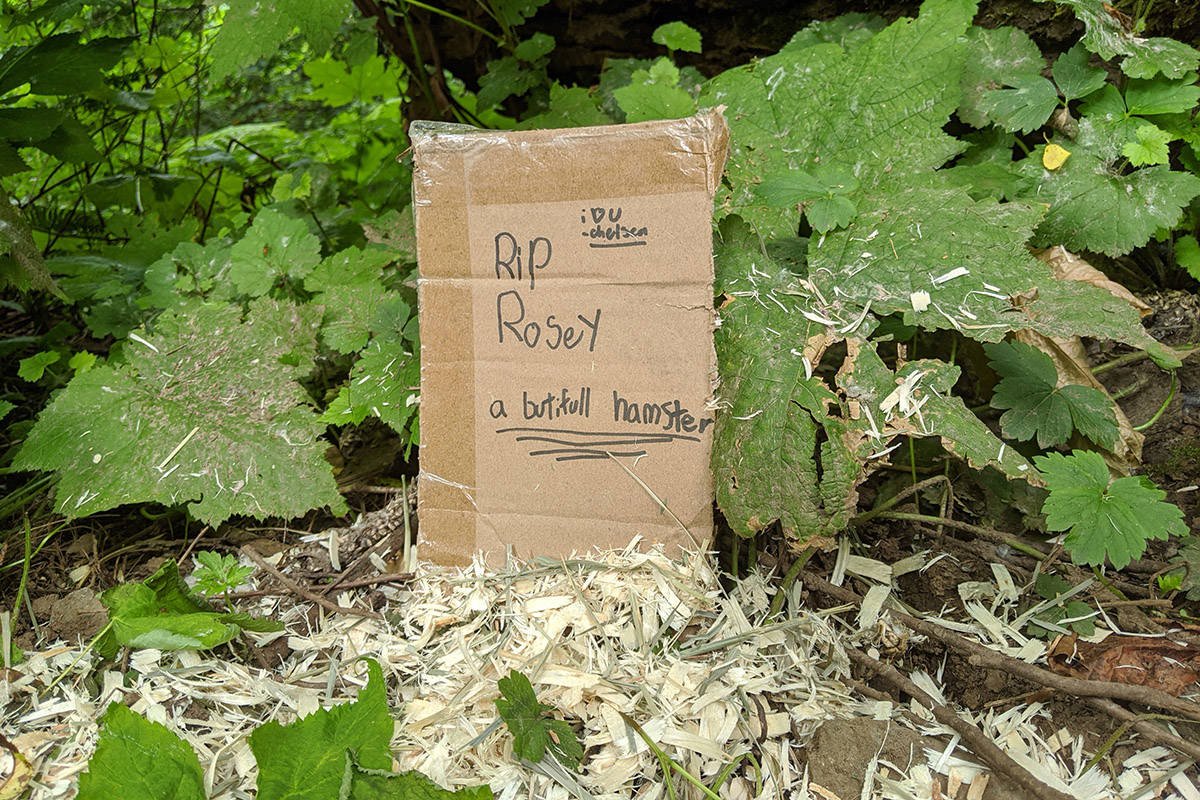 Lifestyle
LifestyleDid You Know: Hamsters That Appear To Be Dead May Sometimes Just Be 'Hibernating'
RIP all the hamsters that were buried alive.
It was a cold morning when I discovered my hamster frozen with its teeth clenched around its cage
The unfortunate day I discovered Hooey died was a sad one, the 4th of July. We held a burial service for him, and my sister made a 'gravestone' for him.
With a marker pen, she wrote his name and the years he was alive on half a transparent CD cover and stuck it into the ground where we buried him.
But… was Hooey truly dead? Or could he have just been 'hibernating'?
Decades later, I've discovered that certain hamster types, such as Siberian and dwarf hamsters, actually 'hibernate' in the wild to survive colder climates
Whether your pet hamster actually does this or not depends on the temperature you maintain in your home.
Veterinary nurse Leah Feusse told The Dodo, "Pet hamsters will begin 'hibernating' if the temperature of their habitat drops below 65ºF (18ºC) for more than 24 hours."
For the most part, "pet hamsters don't usually hibernate when they're used to living in comfortable temperatures that don't change much," according to The Dodo.
In other words, it's dangerous for your pet hamster to 'hibernate', or to use the more correct term — torpor.
Torpor is an involuntary state of reduced mental or motor activity. It's a survival tactic automatically triggered when an animal gets too cold or has limited access to food and water.
Image via Sunira Moses/Unsplash
Here's how to tell if your hamster is in torpor:
I. Observe it closely for signs of life — these may include minor twitching, a gentle jerk or tremble, or slowed-down breathing
Despite appearing motionless and 'dead', hamsters in a torpid state usually exhibit signs of life. You can lightly stroke their paw or whiskers, which might elicit a response. Watch their chest or abdomen closely for signs of breathing.
"When 'hibernating', a hamster can slow their breathing down to only one breath every two minutes, so be patient. You can also feel their ribcage, just above their elbows, for a heartbeat," Feusse explains.
Image via Kong Jun/Unsplash
2. Check its body temperature
Despite a hamster's body temperature dropping during torpor and appearing mostly cold and lifeless, there could still be a faint indication of warmth.
Touch your hamster gently to check if it is a tiny bit warm. Dead hamsters will be stone cold. (Hooey was found stone cold, so I guess it was his time to go after all. RIP, Hooey. T.T <3).
3. Check if your pet hamster's body is limp or stiff
Do this as a last resort if you really can't tell if your hamster is dead or in a torpid state, as moving your hamster could cause it stress or harm its health.
If you pick it up in a torpid state, its body will be limp. On the other hand, a deceased hamster will be completely stiff as it undergoes rigor mortis, a process where the muscles and joints stiffen after a couple of hours of death.
Make sure that you handle this step with care and sensitivity, as the health of your hamster should be your number one priority.
Image via Hamsterscape
If you have determined that your pet hamster is in torpor, this suggests that you need to adjust its habitat
In the wild, when a hamster enters a state of torpor, it will typically last two to three days. However, in more rigid conditions, it could last a week.
In a domestic situation, your pet hamster should only be in torpor for 24 hours. Anything longer may lead to your pet's starvation or dehydration. That's why it's important to closely monitor your hamster's needs.
One way to safely revive your pet is to increase the temperature of its environment with body warmth. According to Pets Vills, you can do this by gently picking up your hamster and holding it close to your body for warmth for 30 minutes.
Alternatively, you can use a hot water bottle filled with hot water (not boiling). Wrap it in a towel or cloth and place it near your pet to transfer heat.
Just remember that when you're warming your pet, do it gradually and gently
You'll want to ensure that its temperature slowly adjusts. Any sudden changes in temperature may cause stress or be harmful to your pet hamster.
Also, be mindful that if your hamster has entered a state of torpor, it's an indication that its environment needs to be adjusted.
Sources: The Dodo, Pets Vills

 Cover image via
Cover image via 


